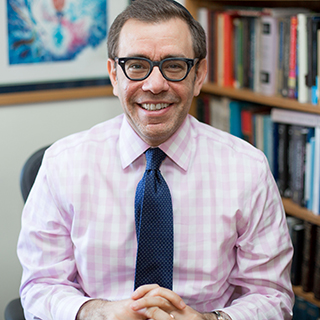Psychotherapy as a Lens for Conceptualizing Teshuvah

I have always thought it interesting that Maimonides places so much emphasis on words in the process called teshuvah, even for transgressions not against other human beings. After quoting the verse from the Torah that speaks about the importance of confession (vidui) as part of the process for repairing a wrong enacted in the world (Num. 5:5–6), Maimonides emphasizes that this must be done with words. Teshuvah cannot be limited to an internal process of reflection. Maimonides stresses that any internal commitments must ultimately get expressed with words and counsels that the more one engages in verbal confession and elaborates on this subject, the more praiseworthy one is (Laws of Teshuvah 1:1).
Freud also placed much emphasis on the role of language in the psychotherapeutic process. Talking, as in the “talking cure” (Freud would later adopt this description for psychotherapy), was not simply seen as a means for diagnosing the conflicts troubling the patient. Rather, talk itself was the treatment. Giving words to one’s inner life allows a person to better understand the motivations for his or her behavior. The process of “talking things out” creates an opportunity to explore undefined feelings and conflicts. Verbally expressing this inner life allows an individual to begin to see the coherent narrative that links up his or her past with the present and a yet-to-be future. It is not so much what we say, but rather it is the process of exploring the inner life that creates healing. Talking—putting thoughts into language—is itself a transformative and redemptive process.
The importance of speech is often made clear to me as I prepare for a presentation. There are times that I prepare for hours for a presentation or lesson and believe I have truly mastered the material. I go over the talk dozens of times in my head. Yet it is only when I begin to speak and explain my thoughts to other people that I better appreciate the areas where I need more clarity in my thinking or see some of the implications of my claims that I had not anticipated. The process of putting thoughts and ideas into words creates a more intense ownership of the subject. This is one of the truths behind keeping a journal and, of course, this is the reason why students of Talmud study in pairs or havrutot. By the means of “talking out” the material and explaining it to another person, the ideas are more deeply clarified and refined.
Teshuvah is not only about expressing regrets over past behavior and the desire to be different. Teshuvah is most fundamentally a process through which we come to know who we are now in the world and also who we aspire to be. It is more than diagnosing or identifying areas we wish to change in our lives. Maimonides’ emphasis on the importance of elaborate, verbal articulation highlights teshuvah as a clarification process that needs to address the most fundamental questions of our lives:
Who do we really want to be in the world?
What are the values that we most cherish and wish to nurture in ourselves? What would we have to do to best nurture these values?
What are the things that keep us from embracing certain visions of our best selves?
Each of us has many “selves” that make up our total identity as a person. Again, which are the selves that we wish to cultivate? What are the most authentic parts of our identities? What do we do with the parts of us that we, at times, enjoy and are authentic parts of who we are, but may get in the way of creating the lives we most deeply wish to live?
What type of community(ies) do we wish to be part of or do we aspire to create?
It is this conceptualization of teshuvah that may allow us to understand an audacious statement found in the Talmud: “Before God created the world, God created the process of teshuvah (BT Pesachim 54a).” Teshuvah is much more than the antidote for wrongdoings against other human beings and God. The term repentance does not adequately capture the meaning of this religious concept. As this claim of the Talmud seems to indicate, the Rabbis conceptualized teshuvahas part of the very fabric of Creation. Teshuvah is the creative process by which we continually (re)imagine ourselves. God created the world by means of words—”And God said, ‘Let there be . . . ” Through the words of our own personalteshuvah, may each of us gain more clarity as to the people we can and need to be in the coming year.
May the new year be one of health, joy, and peace.
The publication and distribution of the JTS Commentary are made possible by a generous grant from Rita Dee and Harold (z”l) Hassenfeld.



